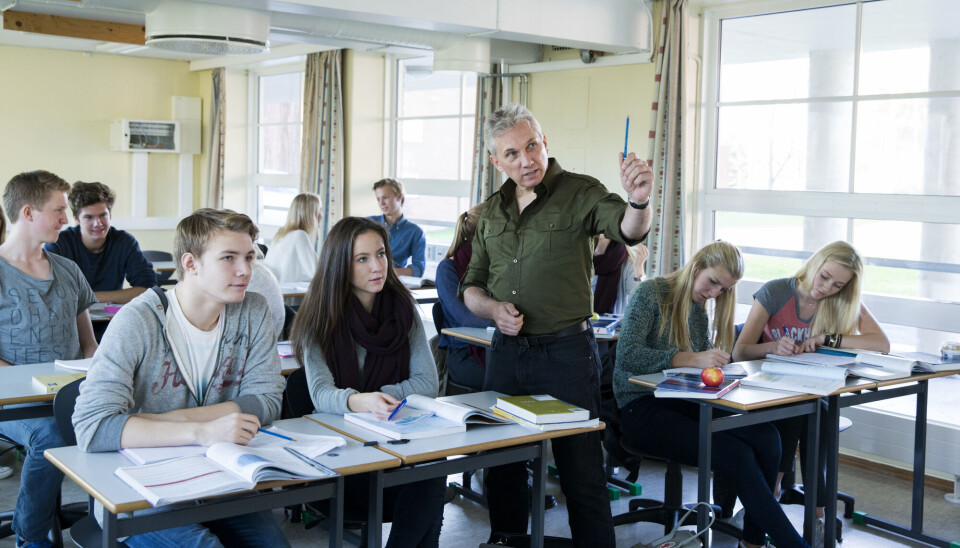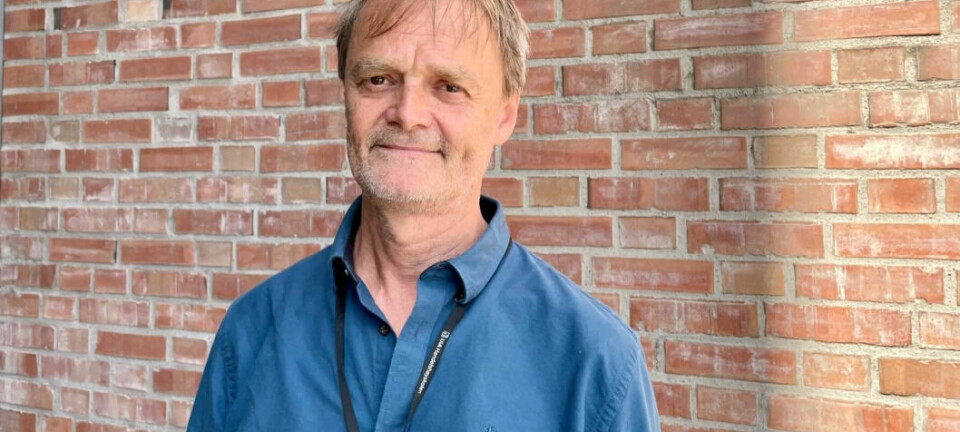
Almost all the students who received top grades in maths have parents with a high level of education
Although the gap has narrowed somewhat in recent years, differences in academic performance due to family background persist.
Both academic performance and motivation vary with social background, but the family's resources are the most important determinant. No matter how many resources the politicians put into the Norwegian school system, the differences remain.
Pupils with highly educated parents still do significantly better at school. They are far more likely to complete upper secondary education.
Last year, Norwegian teachers awarded 5,050 secondary school pupils a grade 6 in maths - the top grade in the Norwegian system.
“Close to 4,300 top grades went to pupils with parents with higher education,” sociologist Anders Bakken at Oslo Met/NOVA said during a debate at Arendalsuka, an annual political festival in Norway.
This corresponds to approximately 85 per cent.
Parents' background trumps school resources
It has been several decades since a Norwegian investigation by Professor of sociology Gudmund Hernes revealed the gap between social background and academic performance.
Since then, politicians have tried to get the schools to balance the differences. But despite the efforts, social differences in society are reproduced at school.
“The resources that the schools implement have less of an impact than the parents' background,” Bakken stated.
The majority of those who fail have poorly educated parents
Children of parents with a higher level of education receive, on average, one grade better than others.
Eight out of ten of those who get the lowest grades are children of parents without a high level of education.
12 per cent of these pupils do not get enough points from compulsory primary and lower secondary education to enter upper secondary school.
Family is the greatest determinant
Many measures have been implemented to balance social differences, like introducing resources earlier for children who need it.
However, studies show that family background is the greatest determinant.
“Inequality affects benefits and burdens later in life, like the opportunity to get a secure job and housing. This also extends to good health and having confidence in the social system,” Bakken said.
Parents' background plays a big role in all countries, and Norway is far from the worst.
Smaller differences in the last ten years
This is admittedly a silver lining. In the last decade, researchers have found that the differences have shrunk. Children of uneducated parents are catching up to the children born with a silver spoon in their mouth.
Among pupils who receive points from compulsory lower-level education that form the basis for admission to upper secondary school, the differences have narrowed somewhat.
The researchers see a similar tendency in upper secondary schools.
Nine out of ten pupils with parents who have a high education level complete upper secondary school. Only half of those with uneducated parents completed upper secondary school before - now 60 per cent of them do. That is an improvement of 10 per cent.
“The implemented measures and resources may have contributed to slightly smaller differences,” Bakken said.
But the degree of completion is also influenced by what takes place in the student's environment outside school.
“Pupils can among other things be impacted by how the authorities set up housing policy,” he pointed out.
Cannot divide students according to background
Inclusive comprehensive schools have been central to counteracting social inequality in the Norwegian school model.
“In Norway, we have prioritised a strong public school, where students with different interests and abilities can follow each other throughout their schooling,” Ingvil Bjordal said at Arendalsuka. She works at the Department of Teacher Education at NTNU.
This contrasts with countries with stronger elements of private alternatives and systems for early sorting of pupils into different school courses.
Norway has instead tried to safeguard public comprehensive schools with restrictive private school legislation.
Additionally, children have the right to go to the school closest to where they live, and there is also legislation to provide adapted education for those who may need it. Pupils cannot be separated or divided based on social and ethnic background, nor gender or academic achievements.
Management by objectives has led to other subjects being opted out
In the 2000s, more focus was put on students' basic skills, and requirements for management by objectives and performance management. There was more free school choice and teachers were made responsible for the pupils' academic achievements.
The theory was that this should strengthen the school's ability to balance social differences.
“But research shows that performance management has instead narrowed the teachers' room for action, and led to a more unidirectional practice,” Bjordal said.
According to teachers, measuring students’ achievements in compulsory subjects has led to other subjects, activities and projects not being prioritised.
“For the children, it restricts their opportunity to master different arenas and areas of knowledge,” she says.
Free school choice prevents integration
Free school choice has helped to reinforce differences in schools, according to Bjordal.
It has fostered competition between schools and led to polarisation along social and ethnic lines.
“This has led to what the teachers call ‘brown’ and ‘white’ schools. According to teachers, this makes it difficult to work with social integration,” Bjordal concluded.
———
Translated by Alette Bjordal Gjellesvik.
Read the Norwegian version of this article on forskning.no
------

































